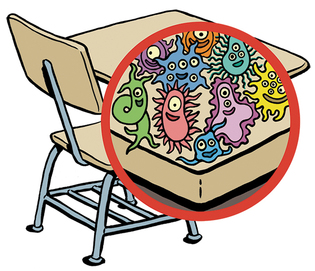 loading
loading
FindingsWhen microbes go to schoolClassroom desks are loaded with germs.  Gregory NemecView full imageStudents working at the desks in their classrooms have a lot of company besides their classmates and teachers: the countless microbes on the desks’ surfaces. And the typical cleaning routine in some schools—just once per semester—doesn’t do much to reduce the germs. The uninvited occupants were analyzed by a team of Yale researchers who work in the lab of Jordan Peccia, a professor of chemical and environmental engineering. The team examined baseline concentrations of bacteria and fungi on desks in ten classrooms in three Connecticut schools. The desks were then cleaned using standard protocols, and researchers took five more samples over 21 days. Their work, published in the Journal of Applied Microbiology, showed that the cleanings removed about half the microbes. After the cleaning, the microbial communities reestablished themselves rapidly: they were at full strength in two to five days. In both the baseline and subsequent samples, about 80 percent of the microbes came from humans: human skin, mouths, and guts. “Meaning,” Peccia says, “that the organisms were not coming in through the air, but being deposited by the people in the rooms.” When several different classes use the same classroom every day, desks could become convenient vehicles for exposing students to each other’s germs. Some microbial exposure benefits our immune system, in at least our first year. “We don’t want everything sterile,” Peccia says. But children average between five and seven respiratory infections per year, and the spread of those germs can be risky for anyone with a compromised immune system. Schools around the country have closed for weeks due to infectious disease outbreaks. The data show that the rate and effectiveness of the current cleaning protocols may not be adequate, says Peccia. “When you’re looking at 25 kids in a confined space, you want to keep that space clean.”
The comment period has expired.
|
|